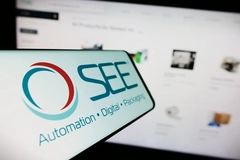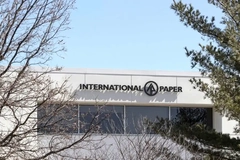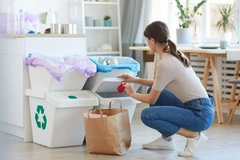Pet food packaging shifts: Industry highlights growing consumer demands amid animal “humanization”
16 Nov 2022 --- As the “humanization” of pets continues, consumers are demanding environmentally sustainable food packaging solutions, a greater packaging variety and clear on-pack communication.
PackagingInsights speaks to industry experts at Coveris, Zacmi, Wipak and Graphic Packaging International (GPI) about current trends in the pet food packaging sector, material shifts, and dynamically shifting consumer demands.
“The pet food segment is very dynamic at the moment, particularly in secondary packaging. There is a need for a hugely diverse range of solutions to service different product applications and configurations,” says Steve Gould, global new business development director – Beverage and Multipack Systems, at GPI.
Gould also observes an increased demand at GPI for multipack solutions which he says is driven by two major factors. First, the growth of e-commerce has led to greater demand for direct-to-consumer multipacks – consumers can buy larger, heavier packs without the inconvenience or difficulty of transporting them home themselves.
“Secondly, from an economic point of view, consumers are choosing to bulk-buy to achieve better value for money while reducing the number of trips required to store. As a result of these two factors, we see more multipack formats that offer different configurations and functionality to service demand,” Gould continues.
“Due to the pandemic strike and the current worldwide scenario of growing logistic costs, we see a strong return of local productions in favor of shorter supply chains,” says Marco Motta, area sales manager at Zacmi.
Wipak is combining fully automated pre-press with solvent-free paper composites.Recyclability and monomaterial
Eric Valette, business unit innovation director at Coveris, highlights that there is a significant increase in demand for recyclable packaging. “Monomaterial plastic packaging is in great demand as it guarantees the same conservation properties of kibbles and ensures a similar machinability on the packaging lines,” he says.
“We have already worked with several clients to support them in changing their standard bag range to a fully recyclable monomaterial solution. Examples include Irish Dog Foods, C&D, Ultra Premium Direct and Demavic. Some customers are also considering paper packaging solutions but do not want to lose the freshness and preservation of kibbles achieved with plastic packaging.”
Moaadh Benkherouf, marketing & sustainability copywriter at Wipak, reports seeing similar trends.
“At the moment, Wipak is combining fully automated pre-press with solvent-free paper composites to create ProDirect printed pouches, a sustainable packaging solution for dog food,” he says.
“We have been observing that many pet food packaging solutions are aiming for acceptable standards for recycling, using oriented PP (OPP) and PP.”
Green demand
GPI’s Gould asserts that plastic reduction or elimination, as with many other sectors, is a prominent trend in the pet food market. “Moving from plastic to recyclable, fiber-based materials is important to many of our customers and their consumers.”
Benkherouf also highlights that current packaging trends are mostly associated with environmental friendliness, freshness, and convenience in addition to see-through packaging. “In that sense, pouches are becoming more in demand nowadays.”
“We have many ongoing investments to ensure our rapid response to the market needs. The first phase of the Bordi pouch factory is done, and phase two is ongoing. Also, the Wipak team is working hard to transform all of our standard portfolios to GreenChoice solutions.”
Cartonboard is a suitable shelf-ready packaging material, allowing cans to be safely and conveniently dispensed, says GPI.“Fur baby megatrend”
Gould explains that consumers nowadays expect more from their pet food and its packaging. “Product premiumization and the ‘fur baby’ megatrend means the line between human food and pet food is becoming blurred. Increasingly, consumers demand recyclability, resealability, ease of opening and handling, to name just a few attributes.”
Furthermore, premium brands use on-pack messaging to clearly communicate detailed product benefits and company values to the consumer. “Our cartonboard solutions and high-quality print provide great billboarding opportunities to achieve this,” adds Gould.
“More and more companies are looking for high speed and high-efficiency solutions and are investing in single format high capacity lines. Zacmi is providing solutions that can cope with high production speeds such as 1000-1200 cpm while ensuring performance reliability,” says Motta.
Plastic or paper?
In line with Coveris’ No Waste sustainability vision, the company optimizes its production processes and packaging solutions. “Plastic or paper – we can offer the best eco-efficient and high-performance solution for each product,” says Valette.
“Our know-how also allows us to have a complete range of paper bags meeting the requirements of the dry pet food market. With our newest PaperBarrier Seal solution, we offer paper packaging alternatives with high barrier properties against moisture, oxygen and grease while tapping into the existing paper recycling stream,” he adds.
“Consumers want to feel that they are playing their part in caring for the environment, and cartonboard enables that to happen because it is so easily and widely recycled – reflected in the fact it is recycled at higher rates than any other material. Furthermore, our carton board is made from renewable plant-based fiber from sustainable sources,” says GPI’s Gould.
 Motta says Zacmi sees a strong increase in demand for small cans dedicated to cats.Eco-friendliness demand
Motta says Zacmi sees a strong increase in demand for small cans dedicated to cats.Eco-friendliness demand
Benkherouf highlights that consumers are becoming increasingly educated and have therefore been demanding solutions promoting environmental responsibility. “They are more inclined toward purchasing pet food products that offer environmentally friendly food for their animals in addition to eco-friendly packaging,” he says.
“People want to recycle more nowadays, and packaging companies must comply with that increase. To meet that increase in demand, companies should create environmentally friendly solutions that are convenient, attractive, and maintain the product’s freshness,” he adds.
“Brands are responding to the growing consumer demand for more ethically and sustainably produced and packed products. Pet humanization, meanwhile, continues to be a core driver behind new product development, with added value across health and wellness. Indulgence and the fun factor are critical in premium product packaging as modern consumers treat their pets like one of the family,” says Gould.
He adds that consumers are also demanding greater transparency regarding ingredient provenance and manufacturing processes, which can help build trust in pet food products.
“The last few years have seen a significant shift in consumer expectations, which is reflected in the greater variety of packaging formats on shelves.”
“Flexibility and automation will continue to prove crucial for brand owners to have the packages they need to thrive today and tomorrow,” concludes Gould.
By Natalie Schwertheim











